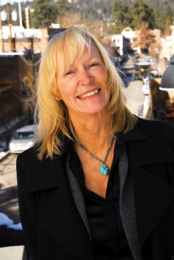by PAMELA HULSE ANDREWS Cascade CBN Editor

For at least a decade educators, business people and individuals in Central Oregon have been talking about a four-year university for our region. Talk turned to plans and plans turned to action. And today we have an opportunity to create an OSU-Cascade campus that will accommodate 3,000 to 5,000 students by 2025.
Last summer the Oregon State Legislature voted to provide $16 million in general fund backed bonds for the expansion, to be matched with at least $4 million in philanthropic support and $4 million in campus-supported bonds. Supporters of OSU-Cascades have surpassed a $4 million private fundraising goal for the campus expansion. Their gifts, which exceed $4.6 million, bring the decades-old vision of a four-year university in Central Oregon another step closer to reality. The private funding is a good indication that the majority of the community supports the expansion at the proposed Bend site.
In April 2013 Oregon State University -Cascades formed the Campus Expansion Advisory Committee (CEAC) to help inform and gather input from the Central Oregon community as it expands to a four-year university on a campus in Bend.
CEAC is co-chaired by Matt Shinderman, a senior instructor of natural resources and the faculty lead for the sustainability degree program and Jodie Barram, City of Bend Mayor Pro Tem. CEAC represents expertise on important issues OSU-Cascades and the community face as the new campus develops in West Bend including transportation and parking, infrastructure, business partnerships, neighborhood livability and sustainability.
The CEAC committee members have spent long volunteer hours reviewing and assessing the options that OSU has in forming a four-year university. The west side Bend location has been thoroughly researched and significant public input has been put into the site selection.
So it’s surprising that in a few short weeks a group called Truth in Site has formed to oppose the campus expansion and are in the process of raising $50,000 to mount a potential legal challenge.
Residents have had numerous opportunities to voice opinions about the selected site, but only now some have expressed their opposition. The group represents a very small minority of the 80,000 residents in Bend, but a legal challenge can and will be especially undermining and damaging to the development of the university.
The university site requires 40 to 60 acres of land to serve a campus of 3,000 to 5,000 students as well as convenient access to schools, fitness, recreation, shopping, restaurants, medical facilities and downtown Bend, close proximity to OSU-Cascades Graduate & Research Center and COCC and convenient access to businesses and organizations that can partner to provide research and internship opportunities.
While Juniper Ridge was carefully considered as an option for the four-year campus, it would have been a more costly and a less marketable location. Juniper Ridge site does not offer amenities within walking/biking distance for students, which would make it very difficult to attract students, faculty and staff — particularly from outside of Central Oregon.
The lack of sewer, water, power and roads to the Juniper site made it prohibitively expensive and it would have been a monumental task to complete the infrastructure required for the campus.
It seems that with amazing due diligence, the OSU Expansion Advisory Committee was able to find current property located at Chandler Avenue and Century Drive that meets the outlined requirements and provides an opportunity to enhance the surrounding neighborhoods with economic growth, attractive architecture and landscaping and additional bike and pedestrian pathways.
The first phase of the development of the west side OSU site is planned for 1,980 students and 70 faculty and staff. The site plan will encompass academic and residential buildings, as well as retail space.
Parking and traffic are raised as issues of concern and yet nearly half of the students and staff are already going to OSU-Cascades at the current Central Oregon Community College location. Over the past five years that OSU-Cascades has been developing in Bend there has been little, if any, complaints about parking, traffic or neighborhood congestion.
Many of the complaints now are focused on parking and traffic, but we suspect that the fears have more to do with their property values and the presence of ‘too many’ young people in Bend. However, no one has complained in the surrounding areas of COCC which include some of the highest valued neighborhoods in Bend about the nearly 18,000 students who come and go at the Bend campus. Nor have the property values around COCC been negatively impacted.
The new group of students who will be added over time will include at least 300 students who will live on campus…students who won’t be driving or parking.
OSU-Cascades has made it abundantly clear that they will maximize on-campus housing to minimize traffic and problems in neighborhoods. Currently OSU only houses 20 percent of its students on campus but has indicated they will make a commitment to significantly increase that number.
The additional students, about 700, will not be on campus all at the same time as their schedules vary. And their peak driving time is from 11am and 3pm which does not conflict with regular business traffic. Many of those students, estimated to be about 20 percent, live within walking distance and another 25 percent within biking distance. OSU-Cascades reports that they will provide all students and faculty with free transit passes and implement incentives to use multi-modal options, such as cheaper parking for carpoolers or rebates for those who don’t drive at all.
The ability to produce qualified workers has been the roadblock for high tech development in Central Oregon for years. The development of a four-year institution will include curriculum parameters to help fuel the growing high tech need. What is suppose to be an exciting addition to Bend is being flooded by a group with access to large amounts of money who appear not have the vision that the attributes a university can bring to the community.
We urge the Bend City Council to look at the future and hear voices of the supporters of this new venture at the currently selected Bend site.
Members of the Campus Expansion Advisory Committee
Steven Ames, Steven Ames Planning, Bend 2030
Scott Aycock, Central Oregon Intergovernmental Council
Bob Brell, Representative, Century West Neighborhood Association
Michael Carr, Representative, Summit West Neighborhood Association
Todd Dunkelberg, Deschutes County Library
Gary Fowles, Representative, River West Neighborhood Association
Brad Henry, Bend-La Pine Schools
Don Horton, Bend Parks and Recreation
Connie Kearney, OSU alumnus
Lee Kearney, OSU alumnus
John Keys, Representative, Southern Crossing Neighborhood Association
Eric King, City of Bend
Michael LaLonde, Bend Chamber of Commerce Board
Roger Lee, Economic Development for Central Oregon
Mike McLandress, Development/Sustainability
Christy McLeod, BMC
Jim Middleton, Central Oregon Community College
Jeff Monson, Commute Options
Angela Price, Pacific Power
Dennis Schaberg, Deschutes Economic Alliance
Bill Smith, William Smith Properties (Old Mill District)
Andrew Spreadborough, Central Oregon Intergovernmental Council
Stacey Stemach, neighborhood representative
Karen Swirsky, Land Conservation & Development, Governor’s Regional Solutions Center
Oran Teater, OSU-Cascades Advisory Board
Kim Travis, Oregon Housing and Community Services, Governor’s Regional Solutions Center
Allan Unger, Deschutes County Commission





